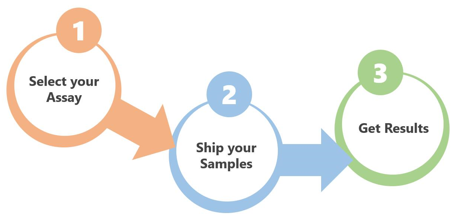Introduction
IL-15 is a soluble cytokine. It acts as a chemokine for a variety of immune cells and participates in and regulates the body's inflammatory and immune responses. Its main biological activities are to stimulate T cell proliferation, regulate B cell proliferation and differentiation, regulate natural killer (NK) cells, and have obvious chemotactic effects on human peripheral blood mononuclear cells. In addition to the above effects, IL-15 can also play an important role in regulating lymphocyte function and homeostasis together with IL-2. Among them, the unique role of IL-2 is to clear autoreactive T cells and prevent itself from immune diseases occurring. On the contrary, IL-15 can maintain the immune response of memory T cells against pathogens for a long time, and it can also play an immune enhancing role in resisting worms and protozoal infections. As a pleiotropic cytokine, in addition to regulating the proliferation and differentiation of immune cells, IL-15 also has anti-apoptotic effects and is a powerful apoptosis inhibitor.
Mechanism and Function
IL-15 can be expressed by monocytes, fibroblasts, macrophages, nerve cells, etc. It is a glycoprotein with a protein size of 14-15kDa. Its biological function is achieved through signal transduction, and its heterotrimeric IL-15 receptor consists of a β subunit (IL-2R / 15Rβ) shared with the IL-2 receptor, and one with IL-2, IL- 4. The common gamma subunit IL-15Rγc shared by IL-7, IL-9 and IL-21, and a unique subunit IL-15Rα that confers specificity to the IL-15 receptor. IL-15 signaling requires that IL-15 first bind to IL-15Rα. After binding, IL-15 activates Janus kinase 1 (Jak1) through IL-15Rβ, activates Janus kinase 3 (Jak3) through γc, and then activates signal transducer and activator of transcription 3 (STAT3) and STAT5. In addition to the JAK1 / JAK3 and STAT3 / STAT5 pathways, IL-15 is also able to activate Sac family protein tyrosine kinases Lck and Syk phosphorylation, PI-3K / Akt pathway, and Ras / Raf / MAPK signal cascade activation. These pathways lead to subsequent expression of Bcl2, Myc, and Fos / Jun and NFkB activation.
IL-15 also has multiple functions in immunity. IL-15 protects neutrophils from apoptosis, regulates phagocytosis, stimulates IL-8 secretion, and antagonizes IL-1R. Monocytes, macrophages and dendritic cells are able to transcribe and translate IL-15. They also stimulate IL-15. Macrophages respond to phagocytosis by increasing, induce the expression of IL-8, IL-12, and monocyte chemotactic protein-1 (MCP-1), and secrete IL-6, IL-8, and TNF-a. IL-15-incubated dendritic cells proved mature with increased CD83, CD86 and showed enhanced IFN-g secretion.
 Fig 1. Mechanism of Signaling
Fig 1. Mechanism of Signaling
Creative Proteomics can provide cytokine detection platform for scientific research. According to different purposes, our dedicated analysts will customize exclusive solutions for you. We aim to provide customers with high-quality and convenient services to help you accelerate the progress of your project.
Our cytokine detection service includes but is not limited to:
- Quantitative and qualitative detection of cytokines in different species
- Quantitative and qualitative detection of cytokine antibodies
- Quantitative and qualitative detection of single/mulltiple cytokines
Sample requirements
- Sample Types-Blood, serum, plasma, cerebrospinal fluid, cell culture supernatant, tissue homogenate, cell culture medium, urine, tumor, etc.
- Sample Volume - It is optimal for at least 200µl of each sample. This volume allows for triplicate testing of each sample.
Our advantages:
- Efficient design: Multiplex reaction detecting in various methods are available, which can be selected according to different samples and requirements.
- Sensitive detection: High-quality antibodies are used in the detection process to improve detection specificity and accuracy.
- Reliable results: The feedback results are professional and efficient.
Technology platform:
We mainly provide the Luminex cytokine detection platform. Luminex uses fluorescently encoded microspheres with specific antibodies to different target molecules. The different microspheres can be combined freely to a certain extent so that up to 100 analytes can be tested multiple times simultaneously in a single experiment.
The Luminex cytokine assay platform has the following advantages:
- Multiple detection: simultaneous detection of 100 biological targets
- Short experiment time: 1-3 weeks
- High sensitivity: the lower limit of accurate quantification is as low as 0.1 pg/mL
- Save samples: only need a sample volume as low as 25 μL
- Time saving: the experiment process only takes 4 hours
For your different needs, we can also provide the following detection methods:
- Enzyme-linked immunosorbent assay (ELISA)
- Flow cytometry
Workflow

For more information about the IL-15 detection service or need other detection requirements, please contact us.
References:
- Dubois S , Mariner J , et al. IL15Rα Recycles and Presents IL15 In trans to Neighboring Cells. Immunity, 2002, 17(5):537-547.
- Waldmann T A , Dubois S, et al. Contrasting roles of IL-2 and IL-15 in the life and death of lymphocytes: implications for immunotherapy. Immunity, 2001, 14(2):105-110.



